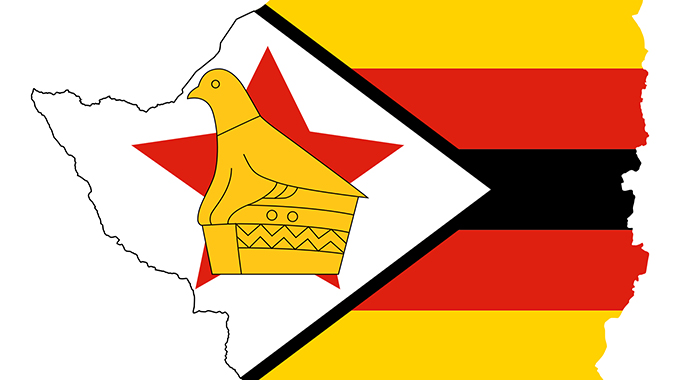EDITORIAL COMMENT : Let’s do away with remnants of colonial past

Today Zimbabweans from all walks of life come together to celebrate the 39th Independence Day and first of its kind under the Second Republic.
While the majority of Zimbabweans will commemorate this day from the comfort of their homes, thousands will attend official celebrations in all the country’s 10 provinces.
The headline event at the National Sports Stadium in Harare, to be presided over by President Mnangagwa, will be beamed live by the national broadcaster. While Independence Day is a day of celebration, it is also a time to reflect. Where are we going as a country, a people, a nation?
As we celebrate this very important day on the Zimbabwean calendar, we thought it would be prudent to reflect on a few issues we could all address as part of the ongoing, never-ending process of liberation.
While Zimbabwe gained independence in 1980, remnants of Rhodesia can still be found in names of places, monuments, the education system, religion, the Constitution and in the underdevelopment of various parts of the country. Admittedly, efforts to change the education curricula, Constitution, names of places and land imbalances have gone a long way in mapping a new path for independent Zimbabwe.
However, a 100-year-old colonial footprint has proved to be impossible to totally wipe out.
Victoria Falls, Beitbridge, Plumtree, Banket, Norton and Birchneough Bridge easily come to mind when one thinks of commercial centres that were never meant to benefit the black majority and were named as such.
These places are either tourist attractions or places of high interaction with foreign countries and nationals. The argument has always been that changing their names now could be bad for business. However, the colonial meaning that they carry is huge.
Victoria Falls, for instance, was named by the British settlers after their monarch, Queen Victoria, despite a local Tonga name for the iconic falls, Mosi-a-Tunya. Maybe it’s time the World Wonder regained its name. Besides the mighty falls, monuments have always been a contentious issue in Zimbabwe.
One of the largest standing statues and most visited by tourists is that of David Livingstone, the British explorer who claimed to have “discovered” Victoria Falls.
This is despite that fact that some other grand statues including that of Cecil John Rhodes were removed from the city centres in Harare and Bulawayo. Where Rhodes’ statue used to stand on Main Street in Bulawayo now stands a statue of the late Vice-President Dr Joshua Nkomo along Joshua Mqabuko Nkomo Street.
Another controversial landmark is the State House in Bulawayo. After the Pioneer Column defeated King Lobengula, they burnt his capital to the ground and built the State House where the king’s palace used to stand. This was regarded as an insult by the locals, but the post-independence Governments have not rectified the situation.
At the Matopos Heritage Site, founding Ndebele king, Mzilikazi’s gravesite is near that of Cecil John Rhodes, but is unkempt and hardly attracts visitors when compared to that of Rhodes. Rhodes’ grave is not only well kept, but is also a cash cow for both Zimparks and the Department of Museums and Monuments. This irony stands as a painful reminder of the colonial past.
Other sites that are not well maintained by the Department of Museums and Monuments include the Pupu Monument in Lupane, Matabeleland North. This is an important site where King Lobengula’s army defeated and totally wiped out an entire battalion including its leader Sir Alan Wilson. The site is unmaintained, not marketed and difficult to access.
Such disregard of landmarks at the heart of local history is a continuation of the legacy of colonisation. On the issue of land, the Land Redistribution programme has largely been successful, but a number of Zimbabweans in the rural areas who rely mainly on subsistence farming are still settled in uninhabitable areas.
This has left them exposed to extreme poverty as was the original intention of the colonial regime which pushed them off their land to make way for a handful of white farmers who later became successful and rich. This economic imbalance exists up to this day as villagers are unable to access loans from banks using their land as surety.
Under-development, some scholars argue, is also one of the vestiges of colonialism. In areas like Mbare in Harare and Makokoba in Bulawayo, inhabitable conditions are the order of the day.
Kitchens and toilets are communally shared in dilapidated flats by residents and this is a clear reminder of the difficult living conditions factory workers were exposed to.
Such flats are still an eyesore as living conditions have not improved. There have been calls for councils to destroy such flats.
The issues are many and can never be fully exhausted in this editorial. However, the 39th Independence Day must allow us to ask ourselves how far we have gone in addressing racial imbalance and preserving our own history.
Bob Marley said: “None but ourselves can free our minds.” Until we free our minds, the struggle is far from over. We need to write our own history and navigate our own future under the Second Republic.
Long live Zimbabwe!








Comments